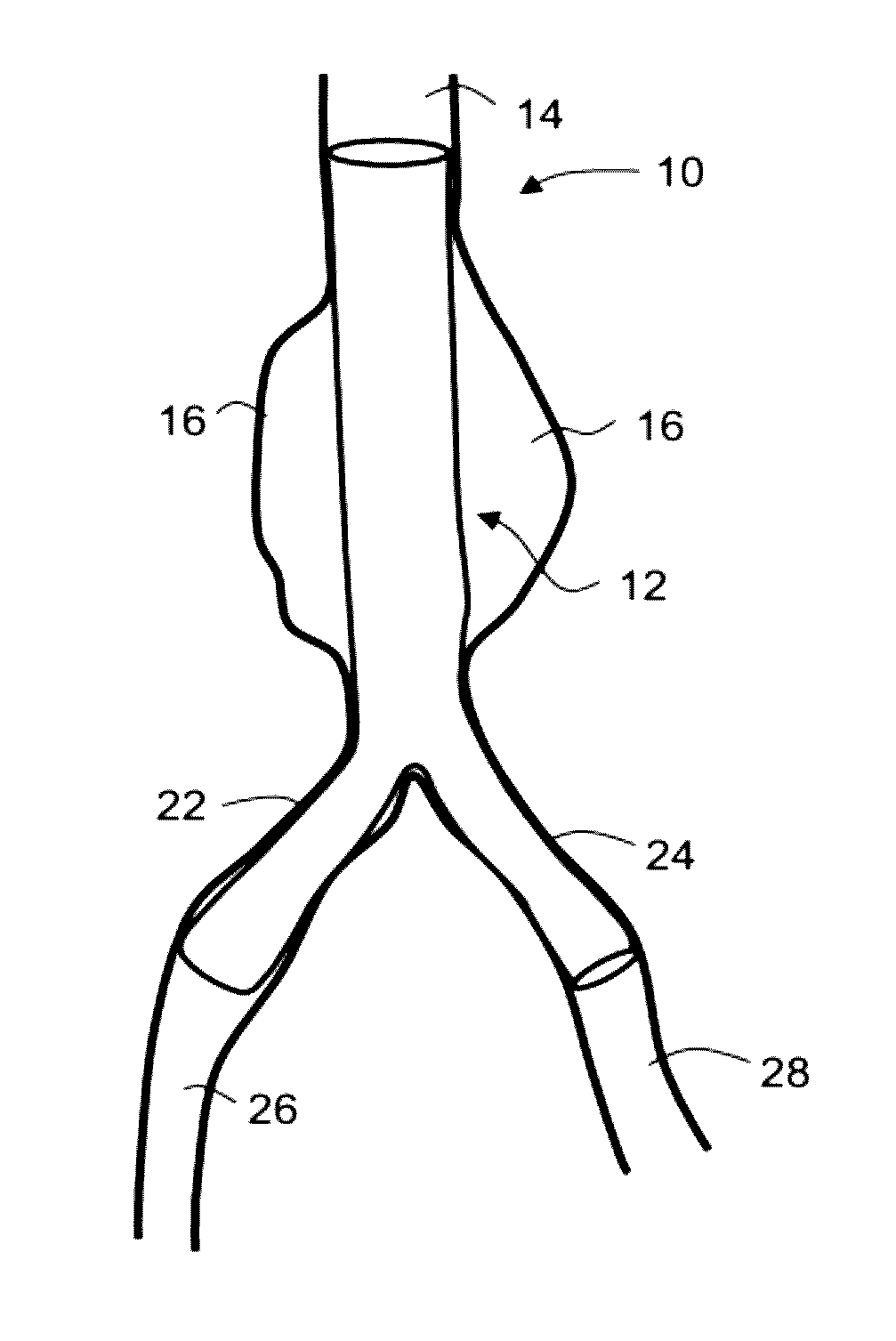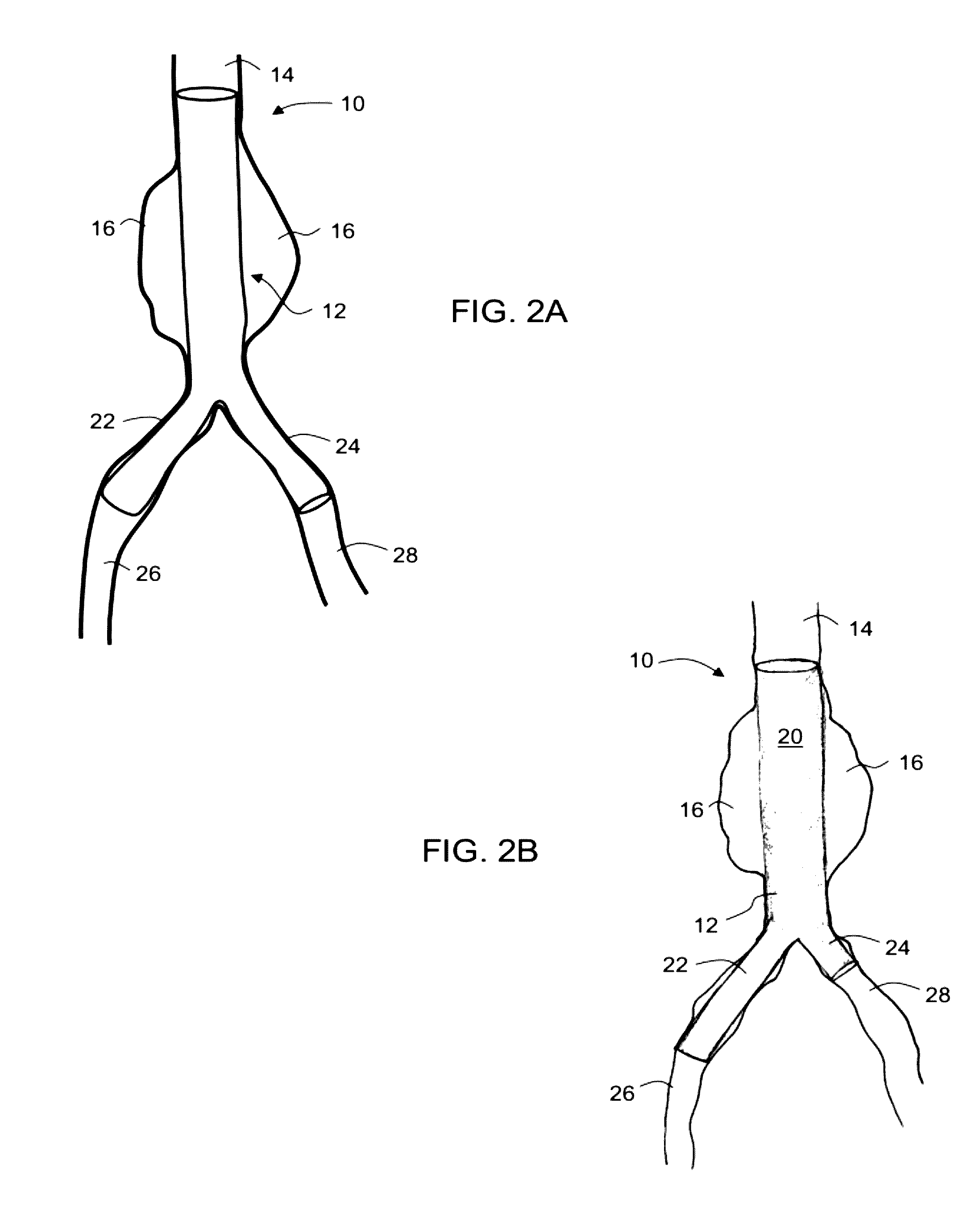Intraluminal polymeric devices for the treatment of aneurysms
a polymeric device and aneurysm technology, applied in the field of polymeric devices, can solve the problems of repeated leakage into the aneurysmal sac (endoleak), device dislocation from its intended position, and major problems, and achieve the effect of increasing decreasing the stiffness of the polymeric system
- Summary
- Abstract
- Description
- Claims
- Application Information
AI Technical Summary
Benefits of technology
Problems solved by technology
Method used
Image
Examples
example 1
Polymer Syntheses
[0464]Polycaprolactone Polyurethane (CLUR)
[0465]Polycaprolactone polyurethane co-polymers are generally prepared by co-polymerizing a polycaprolactone-based polymer with hexamethylene diisocyanate, following the exemplary procedures described hereinafter. The polycaprolactone chain is terminated with functional groups that will allow it to react with the diisocyanate, for example, hydroxy, amine, thiol or carboxylic acid groups.
[0466]The polycaprolactone-based polymers PCL2000, PCL1250 and PCL530 were copolymerized with hexamethylene diisocyanate (HDI) to obtain copolymers referred to herein as CLUR (caprolactone urethane) polymers.
[0467]As an example, the synthesis of CLUR2000 from PCL2000 and HDI is depicted schematically in FIG. 10 and described in detail as follows.
[0468]50.0 grams of OH-terminated PCL2000 was dried at 120° C. under a vacuum for 2 hours with magnetic stirring. Hexamethylene diisocyanate and stannous 2-ethyl hexanoate were added to the reaction m...
example 2
Preparation of Devices
[0494]The following describes exemplary methodologies used for preparing a device according some embodiments of the invention.
[0495]Dip Coating:
[0496]Devices were prepared by dip coating on a suitable mold, typically a cylindrical (6-10 mm diameter) polytetrafluoroethylene-coated mandrel, by slowly dipping the mold into a container containing a solution of 15-20% (w / w) polymer in chloroform, and then slowly withdrawing the mold.
[0497]Dipping and withdrawing the mold was performed at a constant velocity in order to obtain a uniform coating. An electronic motor was used to control the vertical movement and speed during the dipping and withdrawing of the mold. The polytetrafluoroethylene-coated mandrel was dipped 7 cm into the polymer solution using a cross head speed (CHS) of 10 mm per minute.
[0498]For the formation of devices with a wall thickness of 300-700 μm, 5 to 10 dipping cycles were preformed, and the polytetrafluoroethylene-coated mandrel was then dried ...
example 3
Expanded Devices
[0508]Tubular structures prepared from CLUR2000 using the air spray technique described in Example 2 were expanded by inserting a balloon into the tubular device and inflating the balloon with warm (50° C.) water.
[0509]Due to the shape of the balloon, the tubular structures were expanded primarily in their middle. The less expanded edges of the tubular structures were cut off in order to better observe the expanded middle sections.
[0510]As shown in FIG. 16, the diameter of the tubular CLUR2000 structures could be increased considerably by expansion.
[0511]Additional air-sprayed CLUR2000 tubular structures were expanded as described above using a balloon which expanded the full length of the tubular structures. The dimensional changes of tubular structures as a result of expansion were then measured and are given in Table 3.
[0512]
TABLE 3Dimensional changes of tubular structures as a result of expansionDimensionBefore expansionAfter expansionChangeLength (cm)7.57.5 +0%I...
PUM
| Property | Measurement | Unit |
|---|---|---|
| melting point | aaaaa | aaaaa |
| melting point | aaaaa | aaaaa |
| temperature | aaaaa | aaaaa |
Abstract
Description
Claims
Application Information
 Login to View More
Login to View More - R&D
- Intellectual Property
- Life Sciences
- Materials
- Tech Scout
- Unparalleled Data Quality
- Higher Quality Content
- 60% Fewer Hallucinations
Browse by: Latest US Patents, China's latest patents, Technical Efficacy Thesaurus, Application Domain, Technology Topic, Popular Technical Reports.
© 2025 PatSnap. All rights reserved.Legal|Privacy policy|Modern Slavery Act Transparency Statement|Sitemap|About US| Contact US: help@patsnap.com



